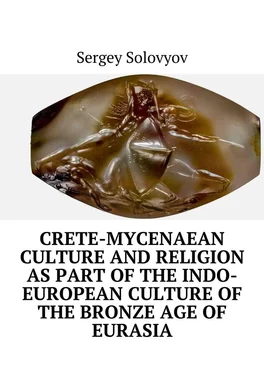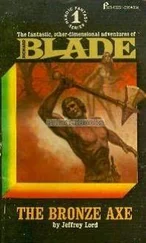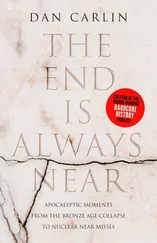Herodotus told the truth. Today in the territory of Abkhazia (Colchis) in the villages of Adziubzha, Merkul, Chelou, Thin, Achandar still live black descendants of Egyptian soldiers. The expedition of the Argonauts, which also took place in Colchis. The soothsayer of the Greeks during the Trojan War was called Kolkhant or Kalhant, Kalkhas-Kolkhidets. Relations between the Achaean Greeks and the Kolkhs were systemic. The Greeks regarded the Colchis as sorcerers. Medea-witch, well, let us recall the testimony of Herodotus about the identity of the Ethiopians and the Colchians. And there was the participation of the Ethiopians in the Trojan War, this is mentioned in the «Ethiopian». Legends of Elena the Beautiful remained in Eurasia. Elena the Beautiful Princess. The golden kingdom is the queen. Elena the beautiful. Elena the Beautiful princess. She asks Ivan Tsarevich three tasks, then marries him. We compare the juvenile apples of Russian fairy tales and the garden of Hesperid. And in another fairy-tale place she marries Vasily-Tsarevich. Tales of Afanasyev. All this is in Russian fairy tales, recorded in the 1820s of the 19th century. About Homer at that time in Russia, simple peasants could not know. The plot of the tale is very similar to the plot of the matchmaking of the suitors to Elena Spartan, with the beginning of the Trojan War. The oath of grooms also becomes understandable, because they owed their lives to a lucky challenger. And also the dispute of the three goddesses about beauty. «Beautiful» read the inscription on a golden apple. They argued and asked the court of Paris Athena, Hera, Aphrodite. But where on the Peloponese blancks would come from? Below is a photo from the Pushkin Museum of Fine Arts. Pushkin is a bronze statuette. It is depicted, as it is said, Aphrodite with Eroth, but with a sign
known from the myths belonging to Athena-Pallas, the creation of all that exists by the power of his mind-the expanding branch from her head. Also on the large photo is a palmette-sign of rebirth from the ways of death. Acanthus, palmetta and meander (Μαίανδρος-translation from Greek is «Μαί-I ανδρος-man», or if the double vowel letter was not written in Greek-Mαία – the birth of ανδρος- (person) or simply the birth) is the most famous decor of antiquity, and its meaning as the meaning of birth and life. Probably, the meander occurred as a simplified image of swans, on vessels. Swans are connected in myths with the birth of man and are associated with Apollo and Aphrodite. Photo below. Artifacts were found in the marshes of the Urals, 2 thousand BC.
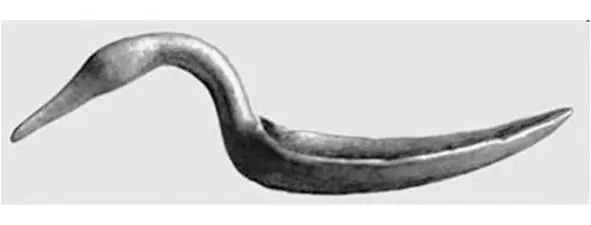
pic.2 Wooden scoop Ural, 2 thousand BC.
Meander is the sign of life. Meander is known on images and vessels from 2 thousand BC. Below is a vessel with a meander. The exhibit was found in the steppes of Orenburg 2 thousand BC.SHM, Moscow.
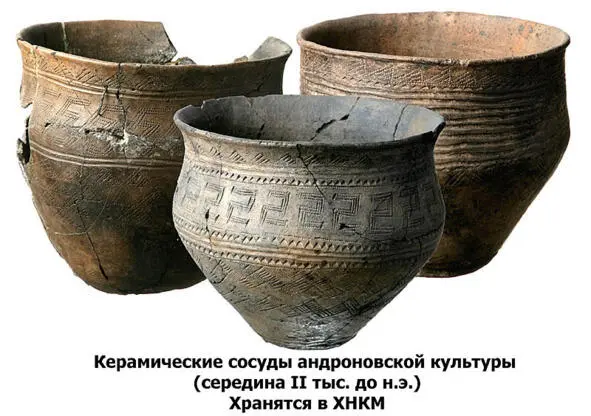
pic.3 Vessel with meander, Orenburg region. Andronov Culture
Acantus is a sign of sorrow and death. Photo below. And, then already in baroque, in garden and park culture, for example in Kuskovo, this ornament was used as a pedestal for busts of famous and dead people.
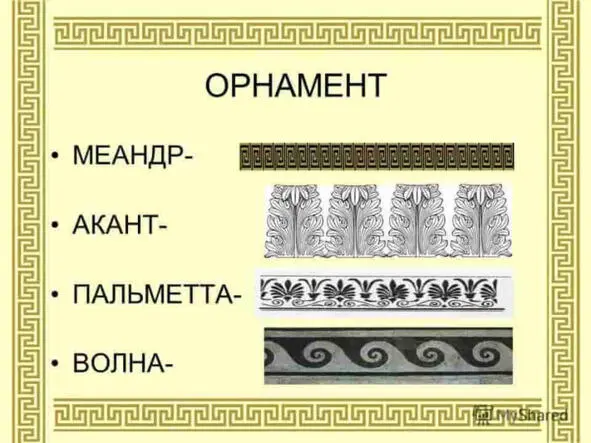
pic. 4 Acanthus and Palmetta, Meander.
A palmetta, the hope of resurrection. Photo above. Acanthus and palmettes were used on all orders of the Doric, Ionic and Corinthian columns, as well as on the vessels of antiquity. That is, Aphrodite-Ella is not only a goddess who gives birth, but also gives a resurrection. Acanthus and palmetta are repeatedly depicted on acroteria. That is, acanthus and palmetta are inextricably linked with the cult of Ella-Aphrodite.

pic.6 Aphrodite with Eros. Pushkin Museum of Fine Arts, Moscow
And Paris-Alexander, apparently was the king-priest of this deity, and accordingly the favorite of Aphrodite (Elena) -Ella. That is, the kidnapping was thought out by the Greeks much later than the capture of Troy, when they forgot about the identity of Elena and Aphrodite. At the Athens Museum there is a gold decoration of the 16th century. AD with a similar plot. As you can see in the photo, the goddess generates everything with the power of her mind. On the photo below, there are capitals of columns with acanthus and palmetto. These were sacred signs. In the case of applying the Doric order, the acanthus was painted on the frieze.
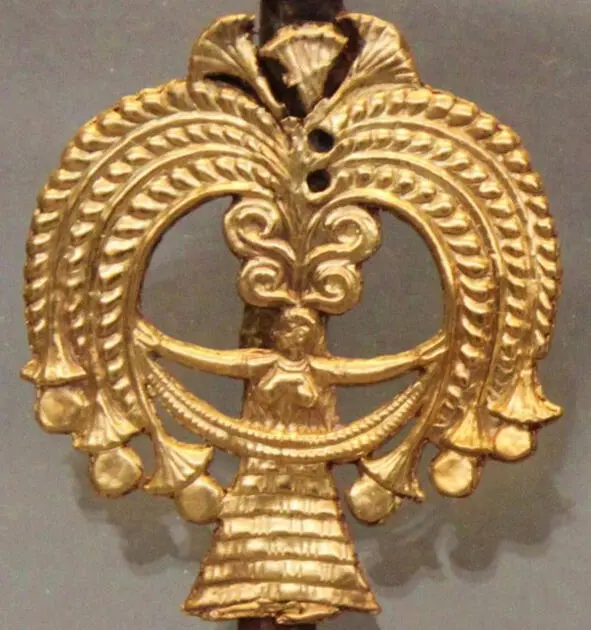
pic. 7. The screw from Mycenae. The Athenian Archaeological Museum
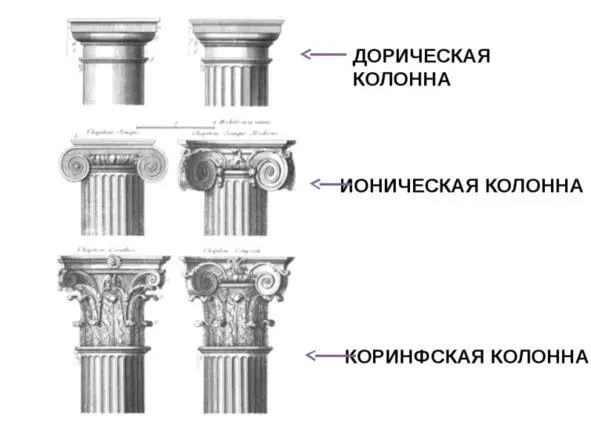
pic.8 Types of orders of columns
As can be seen from the epithets, the identity of Athena and Aphrodite is obvious. Below in the photo, as it is said, a lead plaque from Sparta, and it is said that this is Artemis-Oryphia. Images. as can be seen in the images of Athena, Aphrodite.Ilyphia (also Eilithia / Ilithia, dr.-Greek Εἰλείθυια, Mycenae e-re-u-ti-ja, Elifia – in ancient mythology, the mother-goddess, usually
appears as a saving, but sometimes as a hostile force in childbirth. Without her help birth can not happen. Sometimes Ilfia is a simple attribute of Hera or Artemis, sometimes an independent being. According to Hesiod, Eliphia (Elisia) is the daughter of Zeus and Hera. According to the Cretan version, the daughter of Hera was born in Amnis (the Knaeus region). In Amnis, however, a sign of Linear Letter B was found with the mention of the sacrifice of Ilifia. Homer pointed out that there were several Ilifi (Elysius), whom he calls the daughters of Hera. However, Homer and Pindar mention it in the singular. In Olena’s hymn in honor of Ilifia it is said that she is older than Crohn, she is likened to the goddess of fate, and she was the mother of Eros (that is, the Creator-Love).
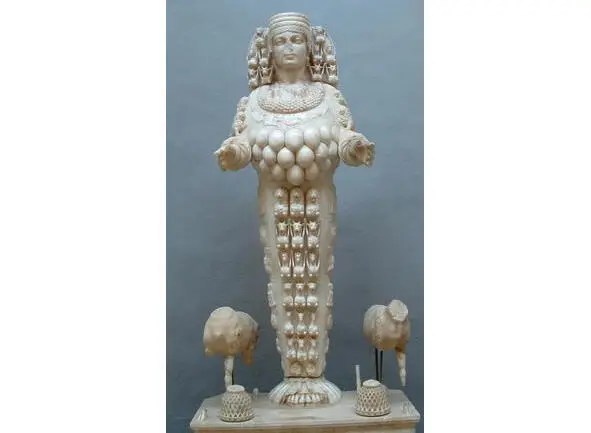
pic.9 Artemis of Ephesus
Just as interesting is the image of Artemis of Ephesus, as proof of the identity of the goddesses of Artemis, Elisia, Persephone, Aphrodite, Athens, because the meaning of this sculpture is the pictogram, meaning the meaning is ciphered in sculpture, when most believers could not read, and the deity sculptures had to be the most informative, that is, this image means «Nourishing, enlarging, all-good, all caring.» That is, this attribute just goes beyond the usual meanings associated with the image of Artemis-hunters and virgins.

pic.10 Lead plates from Sparta with the image of Artemis
Corinth, (Greek-Greek Ϙόρινθος, Greek Κόρινθος, Corinthos-Ancient Greek polis and modern city on the Corinthian isthmus, Corinth can be translated from ancient Greek as the city of Cora, Virgin.) Later, in the classical period, this beautiful city vied with Athens and Thebes in exchange and control of transportation through the isthmus… There was a magnificent temple dedicated to the goddess Aphrodite on the acropolis, according to some sources, there were more than a thousand priestesses in the temple. A priestesses of the temple of Aphrodite always wore long hair, and the longer they were, the better They never wore handkerchiefs, bedspreads or anything else that covered their hair, while all women in Greece wore dresses that covered them from head to toe. In Corinth, Isthmian games were held. In Corinth, the goddess Athena was called Gelotis – Hellötis, BOT-reads, as always-ELLOTIS and in her honor arranged the feast of Hellotia (Ellotia),
Читать дальше
